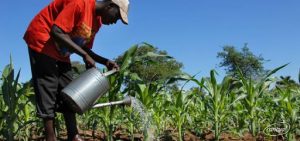This epamonitoring.net article compilation contains 4 articles presented to you on CaribDirect.com over four weeks reviewing the implications for ACP economies of the EC’s projected trends in production and trade in sugar, poultry meat, dairy and rice. While in the short term these projections have now been overtaken by the market and trade impacts of the Covid-19 pandemic, the longer-term projections up to 2030 would appear to remain as valid as any previous EC long term market projections.
In terms of sugar, while EU sugar production post quota abolition is now stabilising, the trend towards declining human consumption of sugar is likely to remain ongoing, despite the temporary collapse of international sugar prices which the Covid-19 pandemic has given rise to. EU corporate restructuring efforts to maximise efficiency and reduce unit costs of production, based on existing EU support measures, remain ongoing. ACP sugar exporters may need to increasingly look to co-refining partners, rather than dedicated raw cane sugar refiners, if they are to maximise their revenues from EU raw cane sugar sales. However, this will be constrained by existing patterns of corporate ownership/partnership between ACP and EU sugar companies. Understanding these evolving corporate dimensions will be increasingly essential to national sugar sector policy formulation in ACP countries.
In the poultry sector EU trade policies continue to drive the expansion of EU poultry production in response to evolving EU consumer demand. It is this EU production expansion which drives EU exports of chicken parts to African and other ACP markets. This suggests across a growing number of sub-Saharan African countries, the strong growth in EU poultry meat exports which stifles local poultry sector development in response to growing African demand is set to continue. This is of course, unless African governments are free to use the types of trade policy tools which the EU itself uses to combat the price advantages which Brazilian and Thai producers enjoy over EU poultry producers (import licences, import duties, tariff quotas, supplementary duties). Unfortunately, this is something which the EC is increasingly looking to prevent African governments’ from doing, as a result of the growing pressure to more rigorously interpret and apply the provisions of concluded trade agreements.

Photo courtesy http://caribya.com/
In the dairy sector the EU is likely to attach growing importance to securing the opening up of markets in sub-Saharan Africa for EU dairy exporters, given the projected 1 million tonnes per annum expansion in EU milk production up to 2030. Africa is seen as the EU’s natural market for dairy exports, with extensive in country investments having been underway since 2013 aimed at positioning EU dairy businesses to more effectively meet growing African demand for dairy products. Currently this trade is dominated by exports of milk powders which are then locally repackaged or reconstituted into value added milk products for local sale.
While skimmed milk powder sales are projected to remain below the 2019 level until 2030, throughout the coming period EU SMP exports will remain on average at double the level of EU SMP exports in 2013, the year before the latest EU milk market crisis. What is more the European Milk Board is warning a new market crisis is pending as a result of the impact of the Covid-19 pandemic on the international dairy trade. This could see the EU reintroduce intervention buying, which, from 2022 could see an earlier resurgence of EU SMP exports alongside the ongoing expansion of EU fat filled milk powder exports.
This in turn could see the EC intensify efforts to secure the removal of both tariffs and all non-tariff barriers to EU exports of dairy products to growing African markets. A key question arises in this context, namely: how can the EU’s current short-term export maximization focus be reconciled with the longer term need to promote the structural development of Africa milk production and the locally integrated dairy sector development?
The final article in this compilation reviews projections for the EU rice sector, where ACP exporters have been playing a progressively smaller role, despite the growth in EU rice consumption and imports (+45%). While both Guyana and Suriname have increased export volumes to the EU to a limited extent, there market share has fallen since 2010, as major LDC exporters have exploited the duty-free access which they now enjoy. The only development likely to reverse this downward trend in ACP rice exports to the EU would be the withdrawal of rice sector tariff preferences from Cambodia and Myanmar on human rights grounds, a step which to date the EU has refrained from doing.
I hope you find the articles brought together in this compilation stimulating and useful.
Paul Goodison – epamonitoring.net


